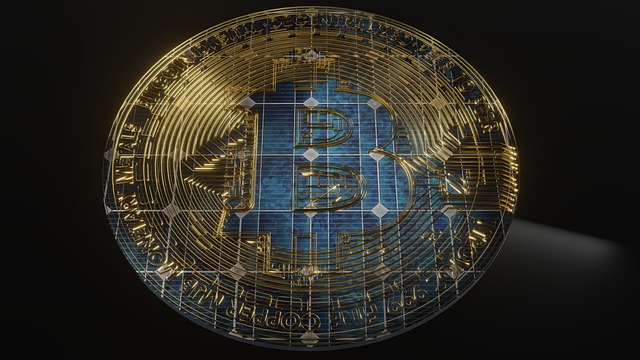Crypto Banking vs. Traditional Banking: A DeFi Perspective
Crypto Banking vs. Traditional Banking: A DeFi Perspective

Crypto Banking: What Is It All About?
Crypto banking, also known as digital banking or virtual banking, refers to the use of cryptocurrencies and blockchain technology in the banking industry. Unlike traditional banking, which involves physical branches and physical currencies, crypto banking operates entirely online. It allows individuals to store, manage, and transfer their digital assets securely, without the need for intermediaries such as banks. This emerging form of banking is gaining popularity due to its decentralized nature and potential for financial freedom.
One of the fundamental aspects of crypto banking is the use of cryptocurrencies as the primary form of currency. Cryptocurrencies, such as Bitcoin, Ethereum, and others, are digital assets that use cryptography to secure transactions and control the creation of new units. By leveraging blockchain technology, crypto banking ensures transparency, immutability, and decentralization in financial transactions. This means that transactions are recorded on a global network of computers, rather than being controlled by a central authority like a bank. This decentralization provides users with greater control over their finances and eliminates the need for intermediaries, reducing transaction fees and processing times.
Traditional Banking: The Basics You Need to Know
Traditional banking is a fundamental component of our global financial system. It is the conventional way in which individuals and businesses conduct their financial operations, such as deposits, withdrawals, loans, and investments. Traditional banks serve as intermediaries between depositors and borrowers, providing a range of products and services to meet various financial needs.
One of the key characteristics of traditional banking is the physical presence of brick-and-mortar branches, where customers can visit to carry out transactions and seek assistance from bank representatives. These branches act as a central hub for various banking activities and provide face-to-face interaction, which can be particularly beneficial for individuals who prefer personalized service and require detailed explanations. Additionally, traditional banks typically offer a wide range of financial products, including savings accounts, checking accounts, credit cards, loans, and mortgages, making them attractive options for individuals and businesses looking for diverse banking solutions.
The Rise of DeFi: Explained
Decentralized Finance (DeFi) is a term that has gained significant traction within the cryptocurrency community in recent years. It refers to the use of blockchain technology and smart contracts to recreate traditional financial systems and services in a decentralized manner. Unlike traditional banking, which relies on centralized authorities such as banks and regulatory bodies, DeFi aims to remove intermediaries from the equation, allowing for a more peer-to-peer approach.
One of the key aspects of DeFi is its ability to provide financial services without the need for middlemen. This means that individuals can directly interact with one another in a trustless manner, thanks to the transparency and security offered by blockchain technology. By eliminating intermediaries, DeFi offers the potential for lower fees, faster transactions, and increased accessibility to financial services for those who may have been excluded or underserved by the traditional banking system. Additionally, DeFi also opens up opportunities for innovation and experimentation in the financial space, allowing developers to create decentralized lending and borrowing platforms, decentralized exchanges, and even decentralized stablecoins.
Understanding the Differences: Crypto Banking vs. Traditional Banking
Crypto banking and traditional banking are two distinct approaches to managing and utilizing financial resources. While traditional banking relies on centralized authorities such as banks and governments to facilitate transactions and provide financial services, crypto banking operates on decentralized networks supported by blockchain technology. The fundamental difference between the two lies in the level of control and transparency they offer to users.
In crypto banking, individuals have complete control over their funds, as they are stored in digital wallets secured by private keys. Since everything is recorded on a public ledger, known as the blockchain, transactions can be easily traced and verified.

The Advantages of Crypto Banking
Crypto banking offers several advantages over traditional banking, making it an appealing option for many individuals. One significant advantage is the enhanced level of security that comes with crypto banking. Transactions carried out through cryptocurrency are encrypted, making them highly secure and difficult to tamper with. This can give users peace of mind knowing that their funds and personal data are well protected.
Another advantage of crypto banking is the ability to have full control over your financial transactions. Unlike traditional banking, where third parties such as banks and payment processors have control over transactions, crypto banking allows users to become their own banks. They can directly manage their funds, execute transactions, and maintain control over their financial activities without relying on intermediaries. This autonomy can provide individuals with a sense of empowerment and freedom when it comes to managing their money.
The Benefits of Traditional Banking
Traditional banking offers a range of benefits that have stood the test of time. One of the key advantages is the physical presence of brick-and-mortar branches. These locations provide a sense of security and accessibility for customers who prefer face-to-face interactions. Being able to speak directly with a bank representative can help address any concerns or inquiries which can be more difficult with digital-only platforms. Additionally, physical branches allow for the deposit and withdrawal of cash, making it convenient for those who still rely on physical currency in their day-to-day transactions.
Alongside the presence of branches, traditional banking offers a wide range of services to suit different financial needs. From savings accounts to mortgage loans, credit cards to investment options, traditional banks provide a comprehensive suite of products. This diversity allows customers to find specific services tailored to their unique circumstances. Moreover, traditional banking often offers various discount programs, preferential rates, and loyalty rewards, making it an attractive choice for those seeking advantageous financial offers. These flexible and customizable options help individuals and businesses navigate their financial goals with ease.
Exploring the Risks of Crypto Banking
For all its promises of financial freedom and decentralization, crypto banking is not without its risks. One of the biggest concerns surrounding crypto banking is its vulnerability to cyber attacks. Since the entire system operates on a digital platform, hackers have ample opportunities to exploit security loopholes and steal digital assets. This risk is further amplified by the anonymous nature of cryptocurrency transactions, making it harder to track and recover stolen funds.
Another risk associated with crypto banking is the volatile nature of cryptocurrencies themselves. Unlike fiat currencies, which are backed by central banks and regulated by governments, cryptocurrencies are highly susceptible to market fluctuations. The value of Bitcoin, for example, can experience wild price swings in a matter of hours, resulting in significant losses for crypto bank account holders. This unpredictability makes it difficult for individuals and businesses to plan their financial strategies and can lead to substantial financial setbacks.
Overall, while crypto banking offers the allure of modern technology and financial freedom, it is important for individuals to be aware of the risks involved. Only by understanding and mitigating these risks can one truly harness the potential benefits of this evolving financial landscape.
Traditional Banking: Potential Drawbacks
Traditional banking has been around for centuries and has proven to be a reliable way to store and manage money. However, it is not without its drawbacks.

Another potential drawback of traditional banking is the fees associated with various services. From monthly maintenance fees to transaction fees and overdraft fees, the costs can quickly add up. These fees can be especially burdensome for individuals who are already struggling financially. Additionally, traditional banks often require a minimum balance to avoid certain fees, which can be restrictive for those who may not have a large amount of money to deposit.
Why DeFi Is Gaining Popularity
Decentralized Finance, or DeFi, has been rapidly gaining popularity in recent years. One of the main reasons for its surge in popularity is the potential it offers for financial inclusivity. Traditional banking systems often have strict requirements and lengthy processes when it comes to accessing financial services. This can be particularly challenging for individuals in underserved or unbanked areas who may not meet these criteria. In contrast, DeFi eliminates the need for intermediaries, allowing anyone with an internet connection to participate in financial activities such as lending, borrowing, and investing. By removing barriers and providing equal opportunities, DeFi opens up a world of possibilities for individuals previously excluded from traditional financial systems.
Another key factor contributing to the popularity of DeFi is the transparency and security it offers. Traditional banking relies heavily on trust in centralized institutions. However, these institutions have complete control over customers’ funds and can act as intermediaries in transactions. This can leave individuals vulnerable to fraud, corruption, and even financial crises. DeFi, on the other hand, operates on blockchain technology, which ensures transparency and immutability of all transactions. Smart contracts, an integral part of DeFi, automate financial processes, eliminating the need for intermediaries and reducing the risk of human error or manipulation.

The Future of Banking: Is DeFi Here to Stay?
As the world embraces digital innovation, the future of banking continues to evolve, and the rise of decentralized finance (DeFi) is a testament to this progress. DeFi, which operates on blockchain technology, offers the potential to revolutionize traditional banking systems by eliminating intermediaries and providing greater financial access to individuals worldwide. With its open-source nature and peer-to-peer transactions, DeFi has gained significant popularity in recent years, challenging the traditional banking sector.
One of the main reasons why DeFi is gaining traction is its ability to provide financial services to the unbanked and underbanked populations. In many countries, a significant number of individuals lack access to basic banking services, making it challenging for them to save, invest, or even receive loans. DeFi platforms, on the other hand, enable individuals to access financial services, such as lending, borrowing, and earning interest, without relying on traditional banks. This inclusivity and accessibility make DeFi an attractive alternative for those seeking financial autonomy and independence.
• DeFi offers financial services to the unbanked and underbanked populations
• In many countries, individuals lack access to basic banking services
• DeFi platforms enable individuals to access lending, borrowing, and earning interest without traditional banks
• DeFi provides inclusivity and accessibility for those seeking financial autonomy
What is crypto banking?
Crypto banking refers to the use of cryptocurrencies, such as Bitcoin, for financial transactions and banking services. It allows individuals to store, send, and receive digital currencies securely without the need for traditional banks.
What is traditional banking?
Traditional banking is the conventional system of banking that involves physical branches, fiat currencies (like USD or EUR), and centralized institutions. It offers services like savings accounts, loans, and credit cards.
What is DeFi?
DeFi stands for Decentralized Finance, which is a system that operates on blockchain technology and aims to recreate traditional financial services in a decentralized manner. It eliminates the need for intermediaries like banks, allowing users to access financial services directly through smart contracts.
How does crypto banking differ from traditional banking?
Crypto banking operates on blockchain technology, making it decentralized and eliminating the need for intermediaries. Traditional banking, on the other hand, relies on centralized institutions and physical branches to provide financial services.
What are the advantages of crypto banking?
Crypto banking offers advantages such as faster and cheaper transactions, increased privacy, global accessibility, and the ability to bypass traditional banking restrictions.
What are the benefits of traditional banking?
Traditional banking provides a sense of security, physical branch access, established regulatory frameworks, customer support services, and the ability to earn interest on savings.
What are the risks of crypto banking?
Risks associated with crypto banking include price volatility, the potential for hacking or theft, lack of regulation, and the irreversible nature of transactions.
What are the potential drawbacks of traditional banking?
Traditional banking can involve high fees, slower transaction times, limited accessibility for individuals in remote areas, and the need for physical presence for most banking activities.
Why is DeFi gaining popularity?
DeFi is gaining popularity due to its potential to provide financial services to the unbanked population, its ability to bypass traditional banking restrictions, and the opportunities for higher returns through decentralized lending and staking.
Is DeFi here to stay in the future of banking?
While the future of banking is uncertain, DeFi has been gaining traction and shows promise as it offers innovative solutions to traditional banking limitations. Its potential for continued growth suggests that DeFi could indeed be here to stay.
Todays Featured Product:
Buy, exchange and grow your crypto securely with a Ledger hardware wallet, combined with the Ledger Live app. It’s never been easier to keep your crypto safe and accessible. Buy direct from Ledger.com and get todays Special Offers Here.




